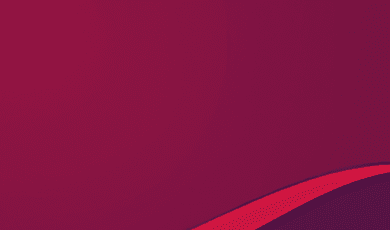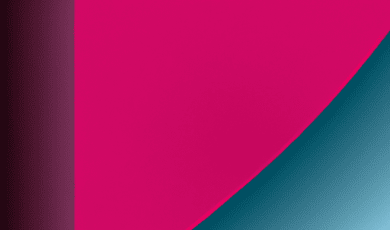How Ethical User Experience Is Becoming a Competitive Advantage
By UX & Design Editorial
Introduction: The UX Landscape Is Changing
In recent years, user experience (UX) has evolved from a technical discipline focused primarily on usability and interface design to a core business value that impacts brand perception, customer loyalty, and long-term profitability. With data privacy scandals, growing regulatory scrutiny, and an increasingly informed user base, another trend is emerging at the heart of digital strategy: ethical user experience.
Today’s consumers expect more than just convenience and aesthetics from digital products—they demand responsibility, transparency, and respect for their rights. In response, organizations are discovering that prioritizing ethical UX is not just a moral choice but a significant competitive advantage in today’s market.
Ethical User Experience: What Does It Mean?
Ethical user experience refers to designing digital products and services that prioritize users’ well-being, privacy, and autonomy while aligning with broader societal values. It involves making design decisions that go beyond profit maximization, avoiding manipulative or deceptive patterns, and putting the user’s interests at the forefront.
Key principles of ethical UX include:
- Transparency: Clear communication about how user data is collected, used, and shared.
- Consent: Genuine choice in accepting or refusing digital terms, subscriptions, and data sharing.
- Accessibility: Ensuring products are usable by people of all abilities and backgrounds.
- Well-being: Avoiding designs that exploit psychological vulnerabilities or encourage unhealthy behaviors.
- Non-manipulation: Rejecting the use of “dark patterns” that trick users into taking actions they might not truly want.
Why Ethics in UX Is a Growing Differentiator
The case for ethical UX as a market differentiator is compelling. Here’s how it’s becoming a key factor in business success:
1. Consumer Trust and Loyalty
According to a 2023 Edelman Trust Barometer report, 71% of consumers say they are more likely to buy from companies they trust. Trust is built on transparency and ethical conduct—and shattered by confusing opt-outs, misleading pricing, or hidden fees. UX decisions such as simple privacy dashboards, clear cookie policies, and straightforward terms of service can foster lasting relationships and set a brand apart from competitors.
2. Regulation Drives Higher Standards
Governments and regulatory bodies worldwide are introducing policies that make ethical UX a necessity. The General Data Protection Regulation (GDPR) in Europe and the Federal Trade Commission’s guidelines in the United States are just two examples. Non-compliance can lead to hefty fines, but forward-thinking organizations see these rules as a minimum baseline, not a maximum ceiling. Those who go beyond compliance to embed ethical design into their culture stand out as industry leaders.
3. Competitive Response to Dark Patterns
Users are increasingly adept at spotting deceptive practices like pre-checked consent boxes, hidden unsubscribe buttons, or endless "Are you sure?" dialogs. In fact, Nielsen Norman Group notes that user backlash against these “dark patterns” can damage brand reputation more than companies realize.
Ethical UX offers a contrast: it gives users control and confidence, bringing a sense of dignity to digital engagement. Companies that highlight their ethical choices—such as easy account deletion, honest renewal policies, or inclusive design—are winning market share from those that cling to manipulative tricks.
4. Ethical Design Drives Innovation
The commitment to ethical design doesn’t need to come at the expense of business objectives. In fact, prioritizing the user’s well-being often sparks innovation. For example, Spotify’s “Private Session” feature gives users granular control over what is shared, while Apple’s comprehensive privacy controls have become a hallmark of its product experience.
Building features that solve ethical dilemmas—like accessible color palettes, anti-addiction tools, or robust consent mechanisms—can set a brand apart in crowded markets.
5. Employee Morale and Brand Advocacy
Top UX talent is looking to work for organizations that reflect their values. When employees feel proud of how their products treat users, they are more engaged, loyal, and productive. Additionally, ethical UX fuels positive word-of-mouth and advocacy, both internally and externally, further boosting a brand’s appeal.
Case Studies: Ethics as a Market Driver
Apple: Privacy as a Product Feature
Apple has made privacy central to its brand promise. With features such as App Tracking Transparency, privacy “nutrition labels,” and on-device Siri processing, Apple illustrates how ethical UX choices can become key selling points. Their consistent messaging—“Privacy. That’s iPhone.”—resonates with consumers and differentiates Apple in a crowded smartphone market.
DuckDuckGo: Search Without Surveillance
DuckDuckGo, the privacy-first search engine, has carved out a significant user base by refusing to track users or create personal profiles. In a world where search habits are seen as intensely personal, the company’s commitment to ethical UX has driven word-of-mouth growth and positioned it as a refreshing alternative to mainstream search providers.
Airbnb: Accessible and Inclusive Experiences
Airbnb’s focus on accessible design is another example of ethics driving advantage. By featuring accessible housing options and supporting hosts in meeting diverse needs, Airbnb addresses ethical and practical challenges faced by travelers with disabilities—turning empathy and inclusion into brand loyalty and growth.
Implementing Ethical User Experience: Steps for Organizations
-
Adopt an Ethical Framework:
Begin with a clear code of principles for product and UX teams. Frameworks such as the Ethical OS toolkit offer checklists and guidelines to help navigate common ethical dilemmas in tech.
-
Train and Empower Teams:
Education is vital. Invest in training UX teams on topics like privacy laws, inclusivity, and dark pattern avoidance. Equip them to raise red flags during the design process.
-
Build Transparency Into Every Interaction:
Review copy and flows for clarity. Make options visible and understandable. Disclose how data will be used and stored up-front—never as a footnote.
-
Include Accessibility and Inclusion:
Test designs with users from diverse backgrounds and abilities. Accessibility is not an afterthought—it should be integral to product development.
-
Regularly Audit and Iterate:
The ethical landscape is dynamic. Schedule periodic audits to identify and fix potential risks, and invite feedback from users about their experience.
Conclusion: Ethics Is Good UX—and Good Business
As digital experiences become omni-present, the stakes for responsible design have never been higher. Ethical user experience is rapidly evolving from a niche concern to a mainstream expectation—a shift propelled by energetic consumers, vigilant regulators, and companies that recognize its strategic value.
The competitive advantage of ethical UX lies in what it represents: a company’s long-term commitment to its users, its willingness to do the right thing even when no one is watching, and its readiness to champion transparency, inclusion, and trust. Those who invest in ethical user experience now will not only avoid costly scandals and fines but also earn loyal customers in an increasingly discerning marketplace.
Is your organization ready to make ethics the cornerstone of your user experience? The race for digital leadership, it turns out, is not just about innovation or efficiency—it's about earning your users' trust for the long haul.









